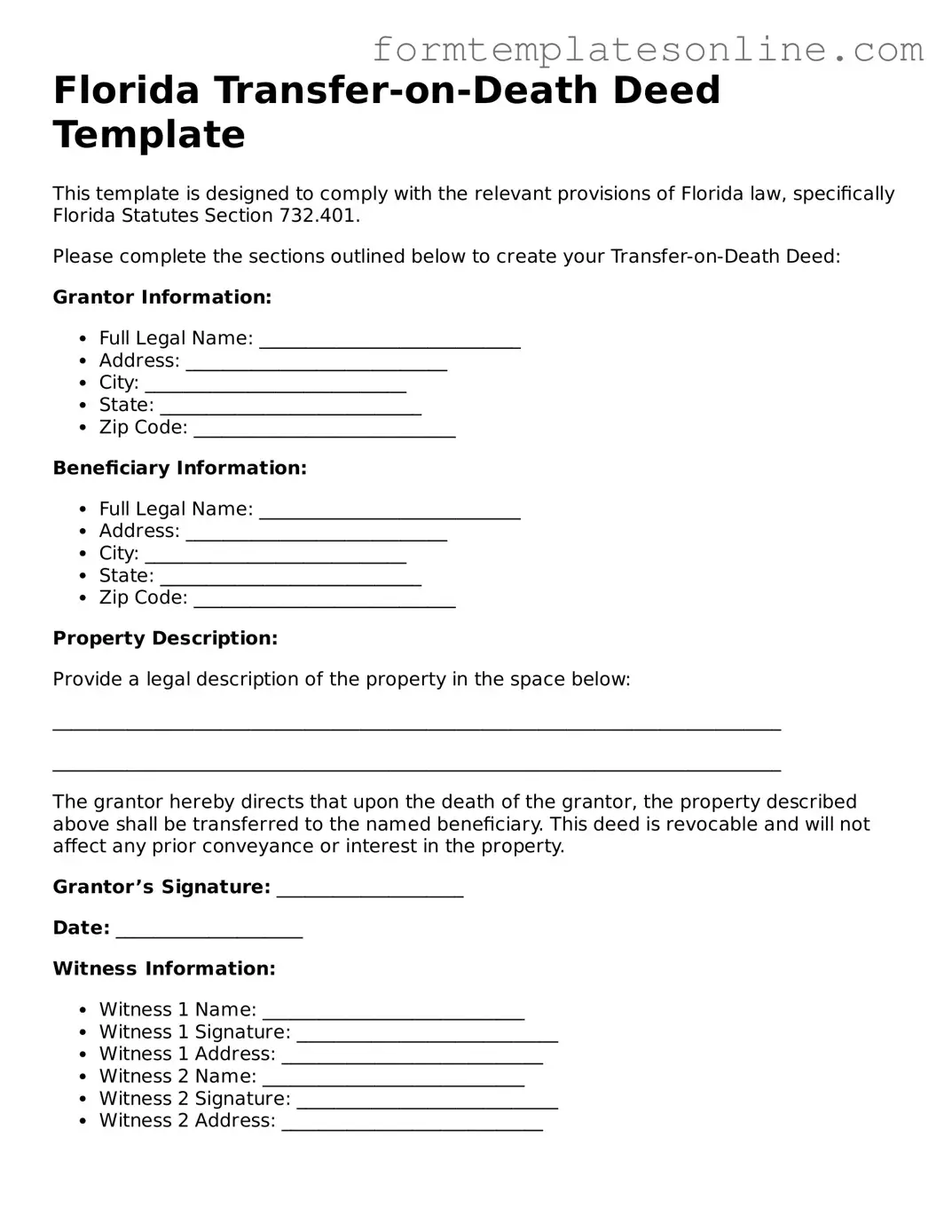What is a Transfer-on-Death Deed in Florida?
A Transfer-on-Death Deed (TODD) is a legal document that allows an individual to transfer real estate to a designated beneficiary upon their death. This deed enables property owners in Florida to avoid probate, which can be a lengthy and costly process. The property remains in the owner's name during their lifetime, and the transfer occurs automatically upon death, provided the deed is properly executed and recorded.
Who can create a Transfer-on-Death Deed?
Any individual who holds title to real property in Florida can create a Transfer-on-Death Deed. This includes homeowners and property owners. However, it is essential that the person creating the deed has the legal capacity to do so, meaning they must be of sound mind and at least 18 years old. Additionally, the property must be located in Florida for the deed to be valid under state law.
How do I execute a Transfer-on-Death Deed?
To execute a Transfer-on-Death Deed, the property owner must complete the deed form, which includes the legal description of the property and the name of the beneficiary. The deed must be signed by the owner in the presence of a notary public. After signing, the deed must be recorded with the county clerk’s office in the county where the property is located. This recording is crucial as it makes the deed effective against third parties.
Can I revoke a Transfer-on-Death Deed?
Yes, a Transfer-on-Death Deed can be revoked. The property owner may revoke the deed at any time before their death. This can be done by executing a new deed that explicitly states the revocation or by recording a formal revocation document with the county clerk’s office. It is important to ensure that any revocation is properly documented to avoid confusion regarding the intended transfer of the property.
What happens if the beneficiary predeceases the property owner?
If the designated beneficiary dies before the property owner, the Transfer-on-Death Deed does not automatically transfer the property. Instead, the property will typically pass according to the property owner's will, or if there is no will, according to Florida's intestacy laws. Property owners may want to consider naming alternate beneficiaries in the deed to address this situation.
Are there any tax implications associated with a Transfer-on-Death Deed?
Generally, a Transfer-on-Death Deed does not trigger any immediate tax implications for the property owner. The property remains part of the owner’s estate until their death. However, beneficiaries may be subject to property taxes once the transfer occurs. It is advisable to consult with a tax professional to understand any potential estate tax implications and ensure compliance with tax laws.
